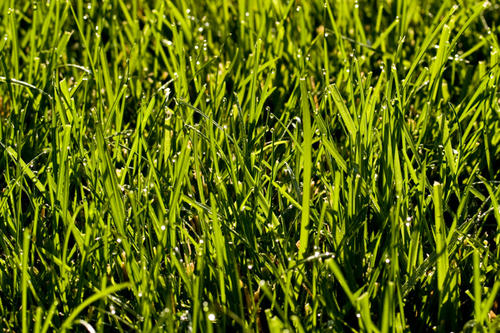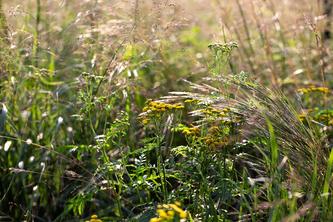
Early fall may be prime time for planting grass seed, but a recent University of Minnesota Extension survey shows many Twin Cities residents who will be seeding could be grossly overwatering it. In fact, the study funded by the Metropolitan Council revealed more than sixty percent of people with irrigation systems regularly over-irrigate their lawns by watering on an automatic cycle.
“Don’t run your entire irrigation system to irrigate the ten percent of your lawn where you’ve planted seed over existing grass,” said Sam Bauer, an Extension educator who specializes in turf grass science. “We found that in the spring people set up their irrigation systems for watering every other day following their city’s odd-even watering ordinances. That’s way too often, and certainly unnecessary.” In the metro, monthly water use is nearly three times greater in the summer compared to the winter, mostly due to outdoor watering, according to the Metropolitan Council.
Extension researchers conducted the first survey of its kind in the Twin Cities last summer to evaluate the lawn irrigation practices of residents in the seven-county metro area. It’s part of a two-year study designed to help homeowners and communities save money and be more efficient with watering practices. “We learned there are opportunities to improve,” Bauer said.
What the survey showed
The survey of more than 900 metro area residents revealed:
- More than 60 percent of respondents water on an automatic cycle—usually odd/even according to their city’s ordinance.
- 75 percent of residents’ irrigation systems had one leaking sprinkler head, 27 percent had 5 or more.
- The average resident irrigates 500 square feet of impervious surface such as streets, driveways, sidewalks, and patios.
- 73 percent of lawns were made up of Kentucky bluegrass, which requires more water and care compared to low-maintenance fescue grasses.
“One of the most important findings is that at least half of our survey respondents did not have their irrigation systems audited (checked for efficiency),” Bauer said. He recommends giving your irrigation system a complete check once a year to make sure it’s running efficiently, no sprinkler heads are broken and leaking and the heads are not watering impervious surfaces.
How much should I water?
A good rule of thumb is one inch per week, Bauer says, which includes both watering and rainfall amounts. He recommends adding a smart irrigation controller which automatically adjusts to the amount of rainfall, the amount of water in the soil and the demands of the plant being watered. Every irrigation system installed after July 2003 in Minnesota is required by law to have a sensor that will interrupt irrigation during times of sufficient rainfall.
One-third of respondents said they did not know how much water they put on their lawns. But there are good reasons to monitor your irrigation system closely. Bauer says the more you water, the shallower your lawn’s grass roots system will be. Without deep roots, grass isn’t hardy enough to survive the stresses of summer and winter, or diseases, insects and weeds.
More importantly, he says water is a finite resource and a good first step towards conservation is to water less. “Your lawn’s going to look a lot better and you’ll save money on your water bill,” he said. “Your lawn will thank you for it.”
For more information on lawn care-water saving strategies, click here.
- Categories:
- Agriculture and Environment





